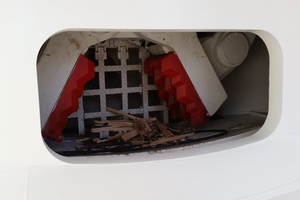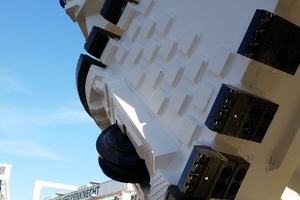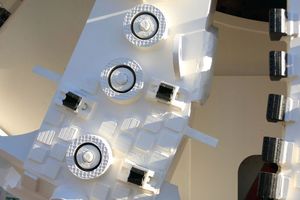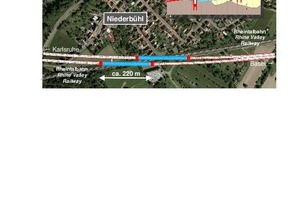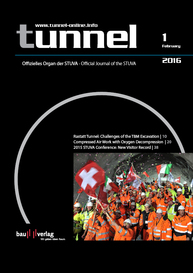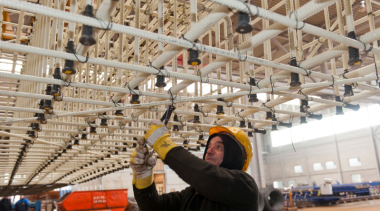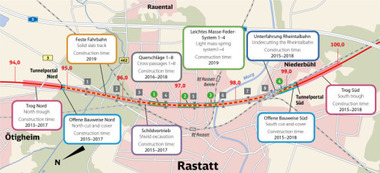Rastatt Tunnel: Strict Demands placed on mechanized Tunnelling
The Rastatt Tunnel represents the core engineering structure in planning approval section 1.2 of the new/upgraded Karlsruhe–Basle rail route. It will be tackled from May 2016 using two hydro-shield tunnel boring machines (TBMs), each with an excavation diameter of 10.97 m. The two single-track, roughly 4270 m long tunnel tubes will be lined with 50 cm thick reinforced concrete segments. The shallow location of the tunnel with minimal overburdens of less than 4 m, the subsidence-prone infrastructure and the presence of buildings, quite apart from having to undertunnel the Federbach low-lying conservation area protected by a frozen cover, place high demands on the engineering and process technology. Undertunnelling the busy Rhine Valley Railway, secured in advance by a ring-shaped brine freezing zone over a distance of 205 m, represents a particularly sophisticated task.
Overview of the Overall Project and Targets
The new/upgraded Karlsruhe-Basle rail route is a part of the European freight corridor Rotterdam–Cologne–Basle–Milan–Genoa as well as the Paris–Budapest artery. The route between the Dutch ports and the Mediterranean is numbered among the Trans-European Networks (TEN), which have been accorded top priority by EU transport policy. In addition, the route represents the most important northern access for the new rail routes crossing the Alps (NEAT).
Once completed, the continuous four-track line between Karlsruhe and Basle will allow traffic to be...



